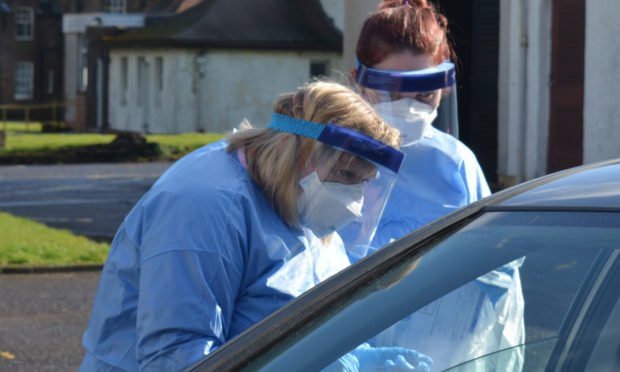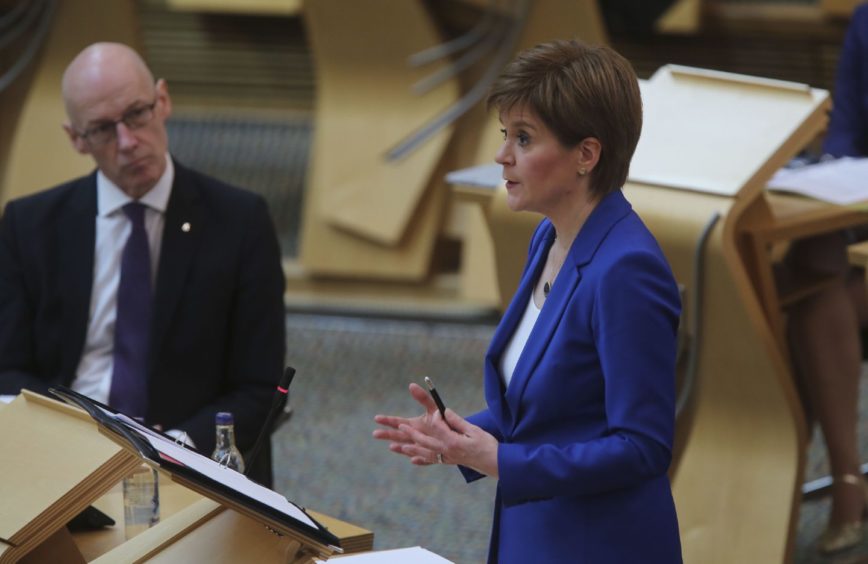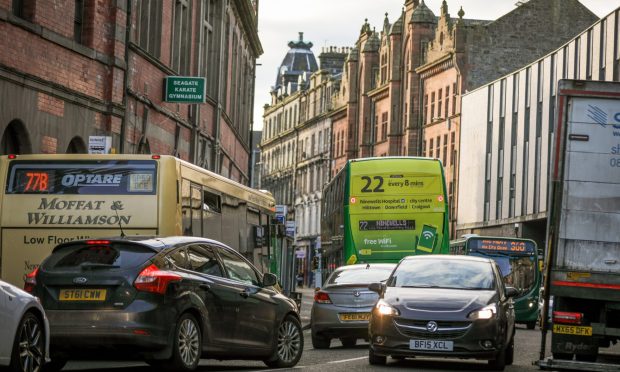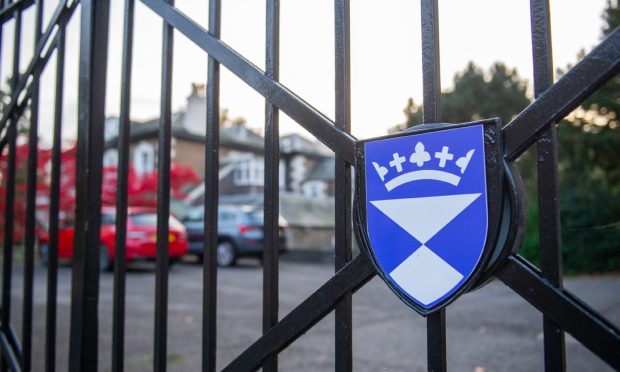The total number of deaths from all causes across Fife has dropped back to pre-Covid-19 levels, as it emerges the region is “likely” past its peak.
The figures show that in the week of May 11, a total of 81 deaths were recorded across the health board area, lower than its five-year average of 84.
It comes as the health board’s medical director, Dr Christopher McKenna, hailed the efforts of staff to prepare for the crisis, stating the region was “likely beyond” the peak of the virus.
Positive trends nationally allowed the First Minister to set out her road map for the gradual easing of lockdown measures on Thursday, with the country set to move into phase one from next week.
Further regional analysis of several sources of data shows further encouraging signs that confirmed cases across both Tayside and Fife peaked in the week of April 5.
In Tayside, this peaked at 343 cases, dropping to 96 last week and 50 so far this week.
Meanwhile, across Fife this dropped from a high of 183 new cases the week of April 5 to 14 cases last week, with just two cases recorded so far this week.
Tayside experienced its peak for the number of Covid-19 patients in hospital on April 8, when 105 people were hospitalised.
But the number in hospital is below a quarter of what it was at its peak, dropping to 21 as of May 20.
Fife has also seen the number of patients in hospital with Covid-19 drop, though not as sharply, from a peak of 114 patients on April 29, to 72 patients as of May 20.
Dr Christopher McKenna said a “significant amount” of work was undertaken to prepare health and care services in the weeks leading up to the first positive cases, meaning the health board had coped “particularly well” throughout the crisis.
He added: “These measures ensured that as an organisation we remained resilient ahead of the anticipated increase in demand and allowed us to manage our services effectively, safely and efficiently as the impact of the pandemic workload was felt within our systems.
“Healthcare services in Fife have coped particularly well and this is in no small part down to the hard work and professionalism shown by healthcare staff across the length and breadth of Fife over a number of months.
“Crucially, while we are now likely beyond the peak of Covid-19 activity in Fife, we continue to work hard to ensure that our services remain agile to meet the urgent and emergency health needs of the people of Fife.
“Local people have shown great understanding as we made the necessary changes to our services, and their actions in following the Scottish Government’s guidance on physical distancing and the ‘Stay at Home’ messaging have played a significant role in slowing the spread of the virus thus far, and in turn reducing the numbers requiring admission to our hospitals.
“We remain vigilant and prepared as an organisation and as we move into a new phase of our Covid-19 response we, more than ever, need the people of Fife follow the national guidance on social distancing and take all necessary steps to limit the spread of the virus.”
Yesterday’s data from the National Records of Scotland (NRS) show Covid-19 deaths have now fallen for three consecutive days.”
Nicola Sturgeon
Tayside has the highest rate of cases, at 387 cases per 100,000 people, but medical bosses have previously linked it to the high volume of testing done by the local health board over an extended period of time.
It was the first in Scotland to begin a testing programme, on March 12, using a drive-through facility for health and social care staff, plus members of their household.
The programme was hailed by the First Minister just last week as an “exemplar of testing”.
In the first three weeks, 1,890 tests were performed with 417 positive results.
The remaining three-quarters who tested negative were able to return to work to support NHS Tayside’s response to Covid-19.
The latest national statistics from the Scottish Government, issued on Thursday, revealed there were 51 people in intensive care across the country, an increase of two since Wednesday.
A total of 37 deaths were recorded over the last 24 hours, bringing the total number of deaths under the Scottish Government’s measurement to 2,221.
Reflecting on the latest figures, the First Minister, in a speech to the Scottish Parliament on Thursday, said the numbers “make clear” the public’s efforts have had an “impact”.
She added: “A mid-range estimate for the number of infected people is 25,000 but we expect that number to decrease further.
“We’re now seeing significant and sustained reductions in the numbers of Covid-19 patients in hospitals.
“The number of Covid-19 patients in intensive care is now less than a quarter of what it was at its peak.
“Yesterday’s data from the National Records of Scotland (NRS) show Covid-19 deaths have now fallen for three consecutive days.
“Last week’s total was just over half the figure that was reported for the last full week in April.”
Progress is fragile and it would be too easy for the virus to run out of control again.”
Nicola Sturgeon
Ms Sturgeon stressed that the R-number, the average number of people an individual would be expected to infect at a point of time during an epidemic such as the Covid-19 crisis, remains between 0.7 and one.
In March, it was likely to be above four.
She added: “It’s worth saying that although these figures do indicate good progress, we cannot and must not be complacent.
“Progress is fragile and it would be too easy for the virus to run out of control again.
“The total number of Covid-19 deaths last week, 351, is still far too high and although we estimate that the R-number is below one, the range has not changed this week, and there is still uncertainty just how far below one it is.”
However, the First Minister does have “some confidence” the R-number has been below one for three weeks and there has been a reduction in new cases, meaning the time was right for a “careful relaxation” of lockdown restrictions.
Professor Peter Stonebridge, Medical Director for NHS Tayside said, “In NHS Tayside we have a decreasing trend of COVID-19 positive patients in our hospitals and that is to be welcomed.
“As the number of cases continues to drop, we are ready to scale back our COVID capacity and the additional resources we have put in place for the first phase of our pandemic response. However, we are able to quickly ramp our capacity to previous, higher levels should it be needed at any time.
“This decreasing trend means that our clinical teams can progress plans which will see more elective activity in our hospitals, making sure we keep our patients safe and they can be cared for and treated in the most appropriate environments.
“As an example, this week has seen a planned change to the way in which we are caring for patients – this time those attending for urgent, surgical procedures. The introduction of a ‘Green Zone’ in Ninewells Hospital, with another to follow at Perth Royal Infirmary in the coming weeks, will protect patients coming to hospital for their urgent operations.”











